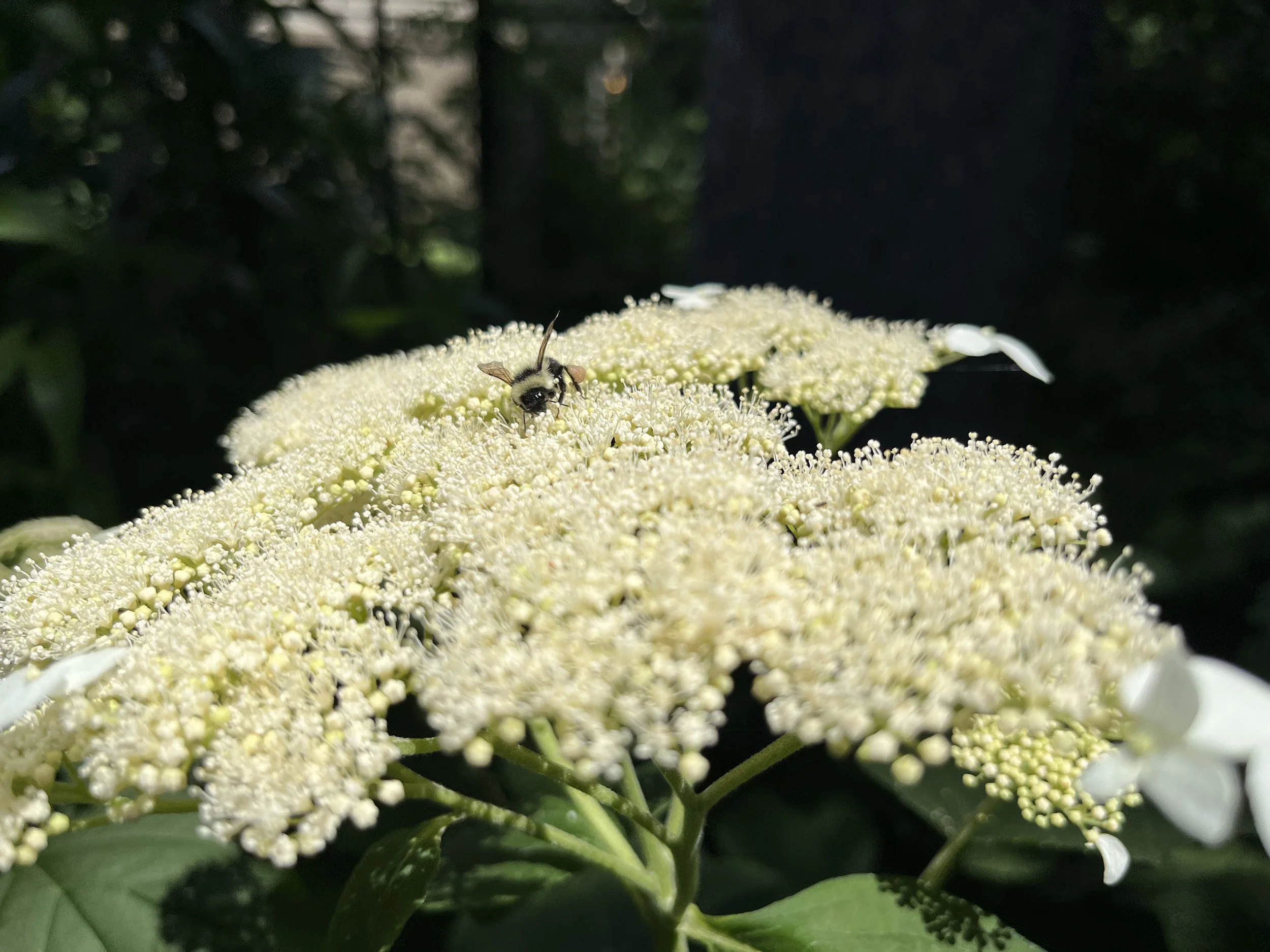It’s the middle of summer and peak hydrangea season in Madison, WI. Hydrangeas are some of the most beloved flowering shrubs in American gardens, and for good reason: they offer long bloom times, bold texture, and a harmonious presence in the landscape. They also are so nice for cut flowers- most drying beautifully for beautifully for winter bouquets. There are several types of hydrangeas commonly grown in the Midwest, each with their own form, flower style, and preferred conditions.
A Quick Guide to Hydrangea Types
Hydrangea arborescens (Smooth hydrangea):
Native to the eastern U.S., these bloom on new wood, which means they flower on the current season’s growth. This makes them reliable bloomers even after harsh winters. They can be pruned hard in late winter or early spring to maintain shape and encourage vigorous flowering.Hydrangea paniculata (Panicle hydrangea):
Also blooms on new wood, so you’ll get consistent flowering year to year. These are very cold-hardy, and also tolerate more stronger sun than most hydrangeas. Prune in late winter or early spring to shape or reduce size.Hydrangea quercifolia (Oakleaf hydrangea):
These bloom on old wood—last year’s stems. This means flower buds can be damaged by late frosts (though I’ve never seen this) or improper pruning. Prune only after blooming, and avoid heavy cuts in fall, winter, or early spring. These are best shaped minimally to preserve next year’s blooms.Hydrangea macrophylla (Bigleaf hydrangea):
Typically bloom on old wood, though newer reblooming varieties can flower on both old and new wood. In our climate, winter injury often kills the buds, leading to inconsistent blooming. That’s why we rarely plant them here (though that may change with newer, hardier cultivars).
Here are our current top five favorites:
1. Haas’ Halo
Hydrangea arborescens
This native hydrangea has big, saucer-like lacecap flowers that span up 8 inches across. The white blooms hover like halos over deep green foliage, attracting lots of pollinators. The sturdy stems resist flopping—a common complaint with older smooth hydrangeas. It's beautiful in partial shade and tolerates clay soil well. If I’ve done a planting design for you, it probably has a Haas’ Halo Hydrangea (or five) on it. I just love them.
2. Invincibelle Spirit II
Hydrangea arborescens
This improved version of the original Invincibelle Spirit offers stronger stems, richer pink flowers, and better overall performance. The blooms emerge a deep, saturated rose and age gracefully to soft blush, creating a multi-tonal effect through the season. It also brings in a fair number of pollinators for a mop head hydrangea! It’s a dependable choice for sunny or partly shaded gardens- and still supports breast cancer research with each purchase. We have some of these in our nursery right now and are always admiring them.
3. Quick Fire
Hydrangea paniculata
This early-blooming panicle hydrangea earns its name—it flowers a full month before most paniculatas, starting out creamy white and quickly turning rich, antique pink as the season progresses. It’s extremely adaptable and thrives in full sun to part shade. The color on these is just beautiful (some popular paniculatas can look a bit garish to me, though I’m sure they have their place- I think they could be pretty cute in front of an ice cream shop!) It’s one of Eric’s favorite plants. If you want to make him happy and hear him say the word ‘gorgeous’, show him a blooming Quick Fire.
If you're tight on space, Little Quick Fire offers the same excellent performance in a smaller form, topping out around 3-5 feet.
4. Jetstream Oakleaf Hydrangea
Hydrangea quercifolia
We love oakleaf hydrangeas for their bold leaves, exfoliating bark, and four-season appeal. Jetstream is a compact, refined variety with dense foliage, strong stems, and upright white flowers that turn pink as they age. It also boasts some of the best fall color of any shrub—fiery reds and oranges that rival maples.
Other oakleafs, like ‘Alice,’ are also excellent, especially if you have room for a larger, more sprawling plant.
5. Invincibelle Lace
Hydrangea arborescens
This newer introduction offers a lacy, airy form on strong stems with dark, dramatic foliage. Its lacecap blooms are pink and delicate. It has the same native toughness as other arborescens types and brings an elegant, naturalistic vibe to the garden.
Let us know if you’d like help choosing the best hydrangea for your site- at Aspen Garden and Landscape, we’re always happy to talk (and talk and talk) about plants!

